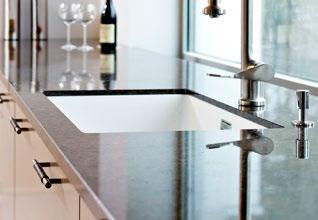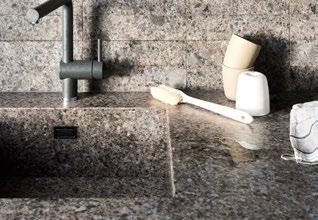
1 minute read
Details that matter
Most kitchens will require a sink installation. There are a number of options offered by different suppliers regarding both materials and design. Here is an overview of the most common installation methods and what kind of finished look they will achieve in your kitchen.

INSET SINK Inset sink is a conventional method of installation. The sink centre is simply inserted from above into a prepared cut out space in your worktop.

FLUSHMOUNT SINK With this installation method, the sink and the worktop form a level surface – which is perfectly flush and has no joints to get in the way.
UNDERMOUNT SINK The sink is installed under the worktop, providing a functional extension of the surface and an easy-to-clean area. It also offers the possibility to create draining grooves on one or both sides of the sink if desired.
Hobs
The hob is a vital part of the kitchen – here are the most common options for installation.

RECESSED UNDERMOUNT The installation of a recessed undermount sink is almost the same as for a normal undermount sink. The difference is that the visible stone edge inside the sink is thinner than the worktop. This installation is only possible on worktops that are at least 3 cm thick. INTEGRATED SINK If you like the idea of your sink being the same material as your worktop, then an integrated design is a good option, making the sink and worktop into one seamless unit.

INSET HOB The worktop is simply inserted from above into a prepared cut out space in

your worktop.

FLUSHMOUNT HOB With this installation method, the cooktop and the worktop form a level surface – which is perfectly flush and easy to maintain.







